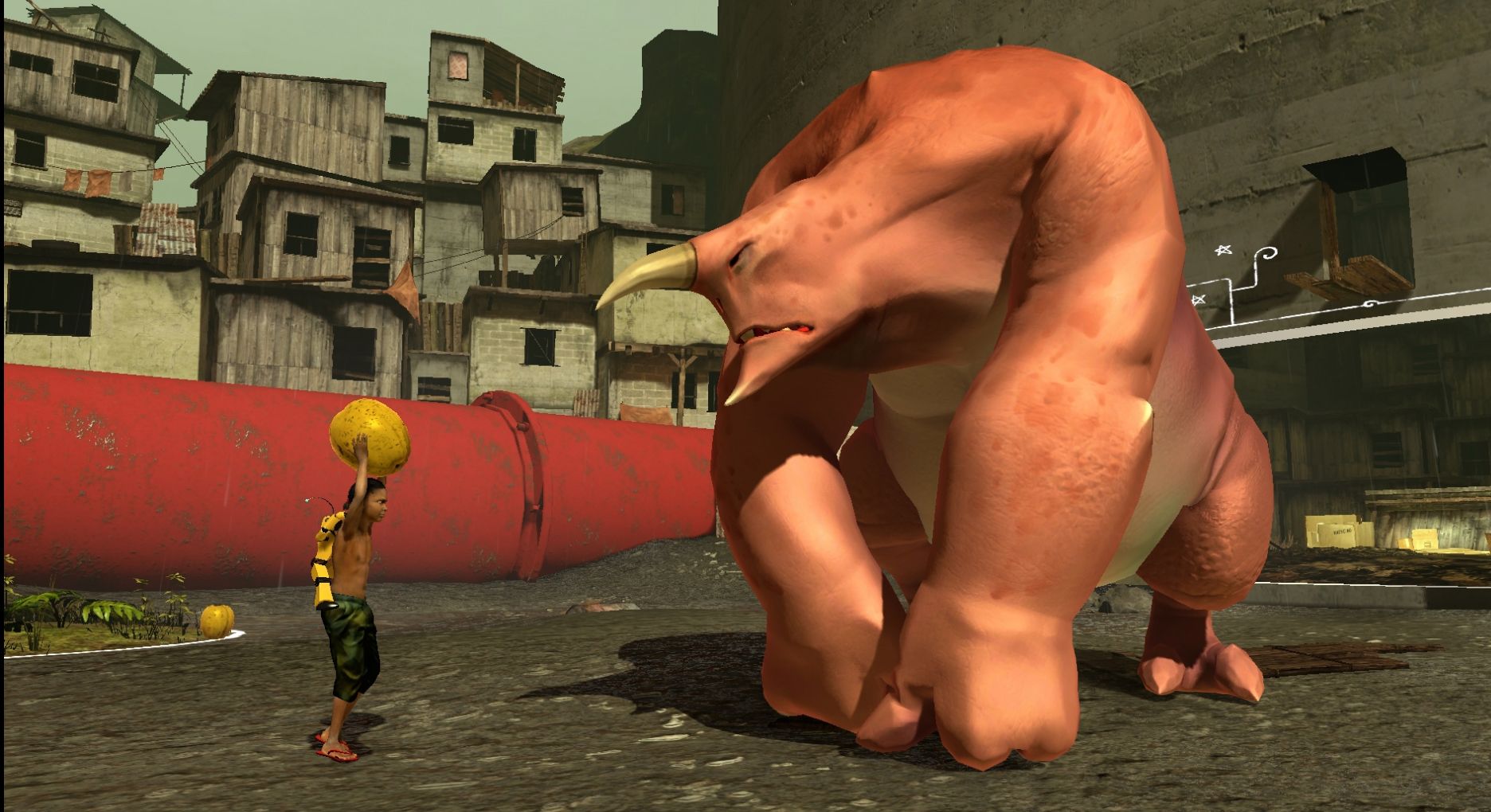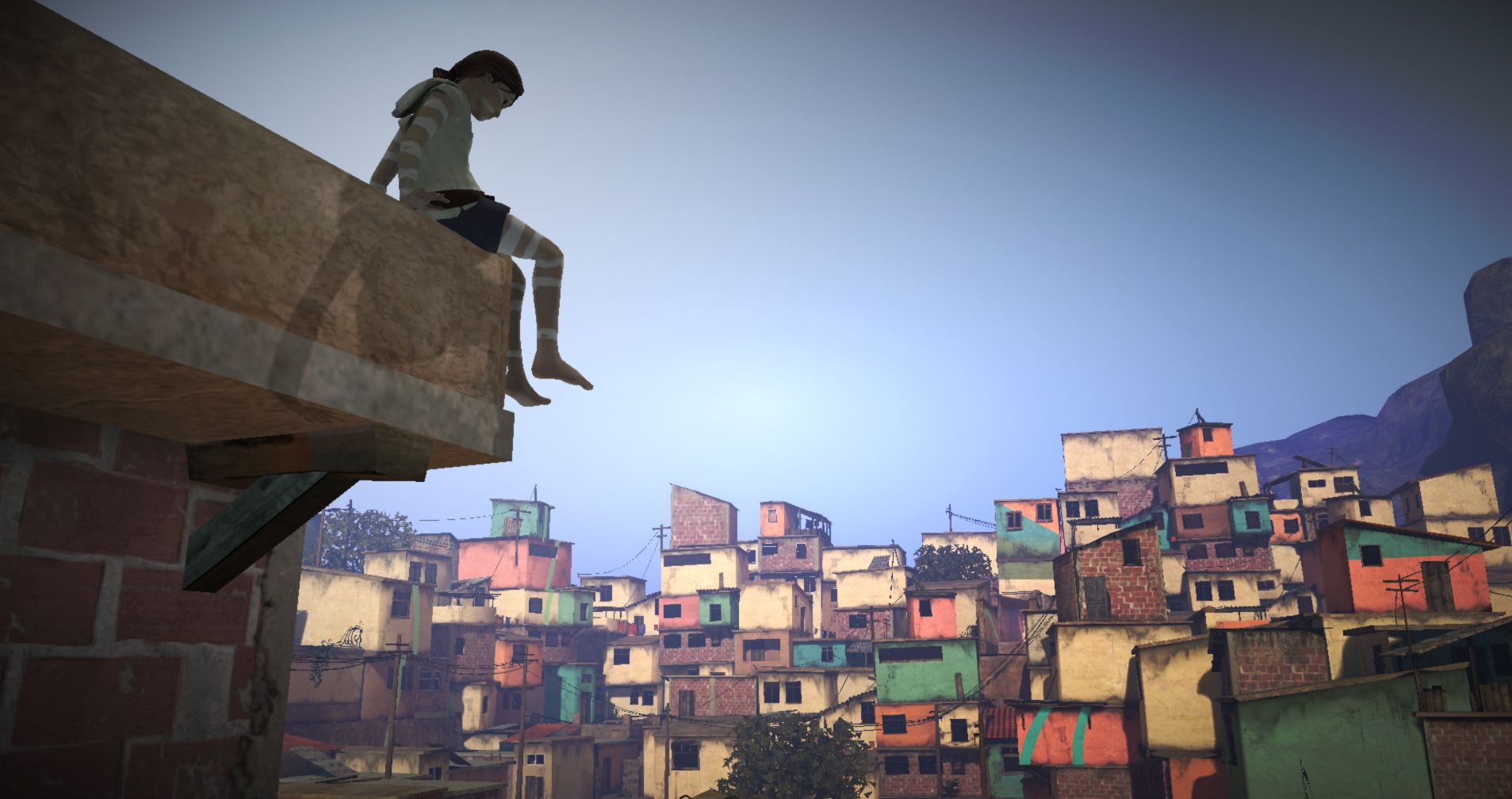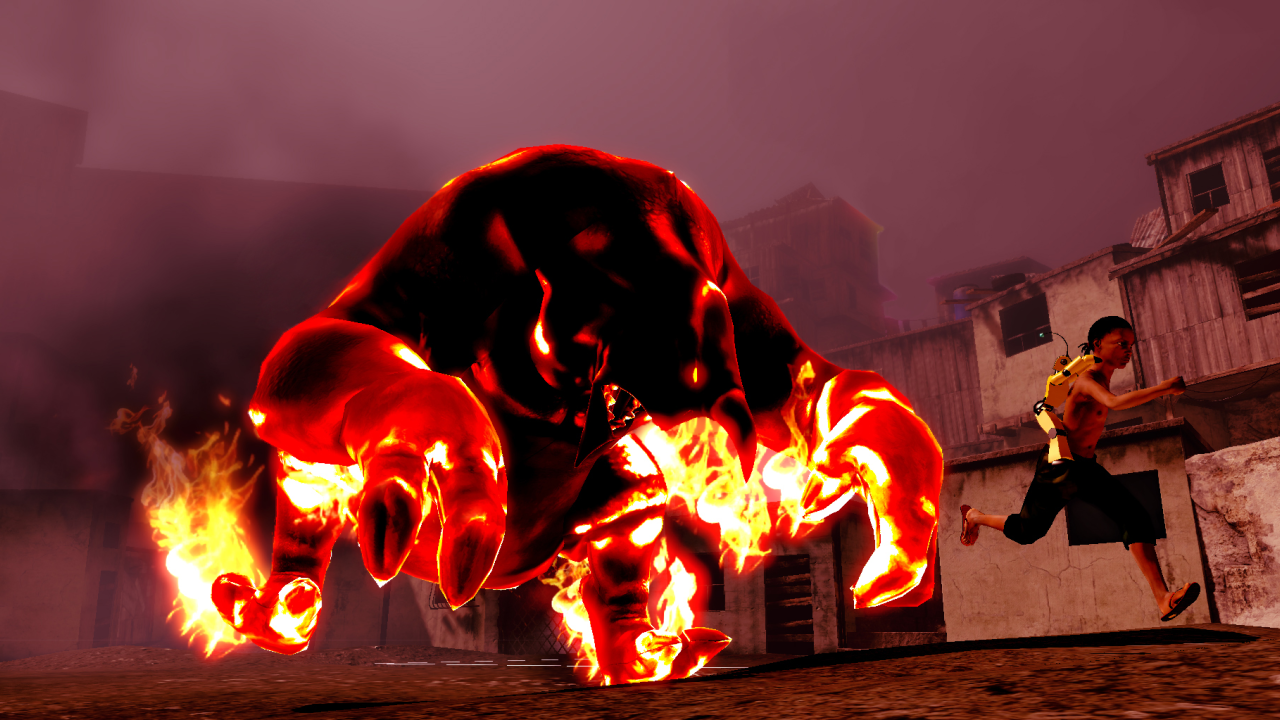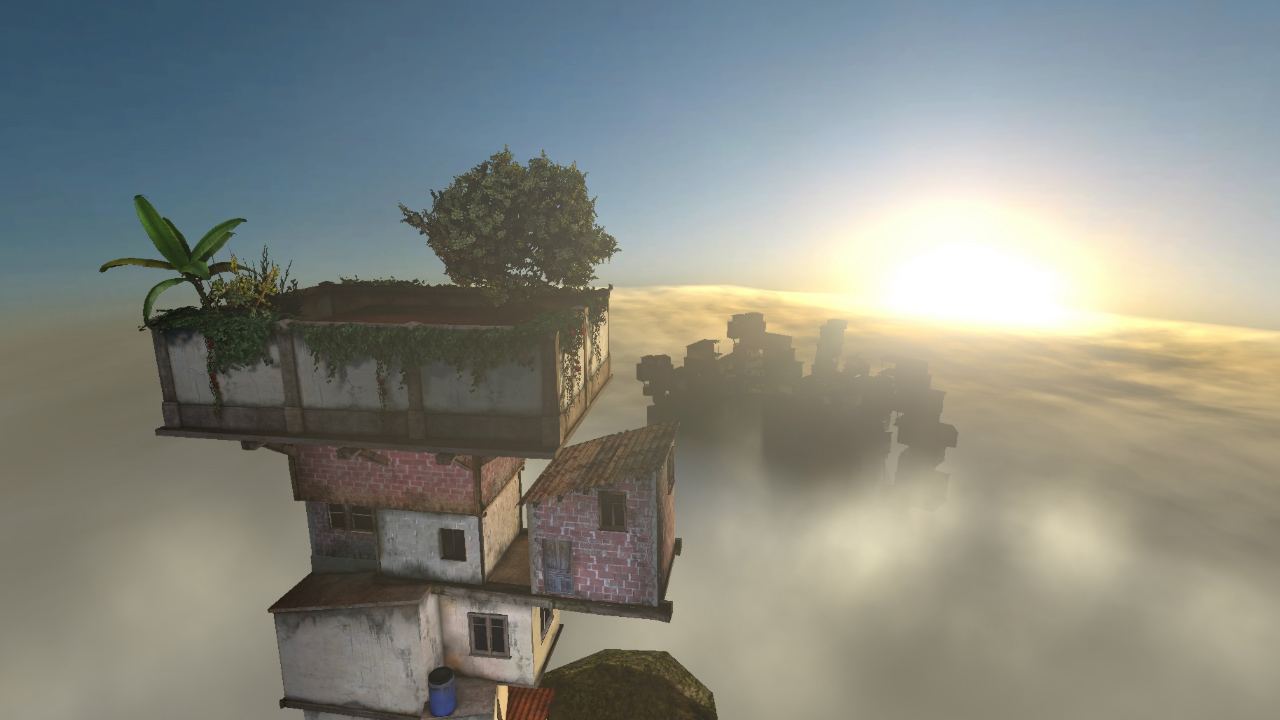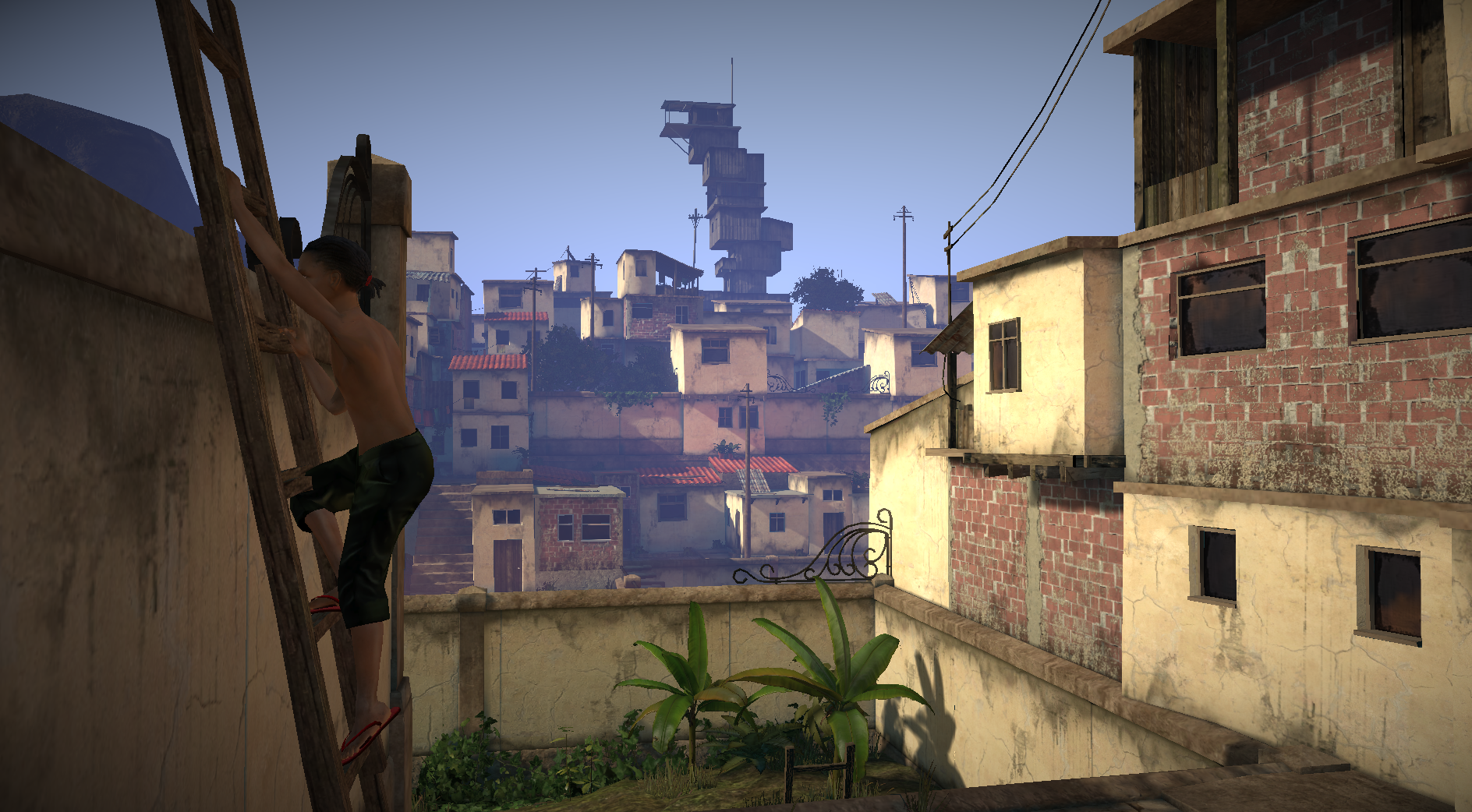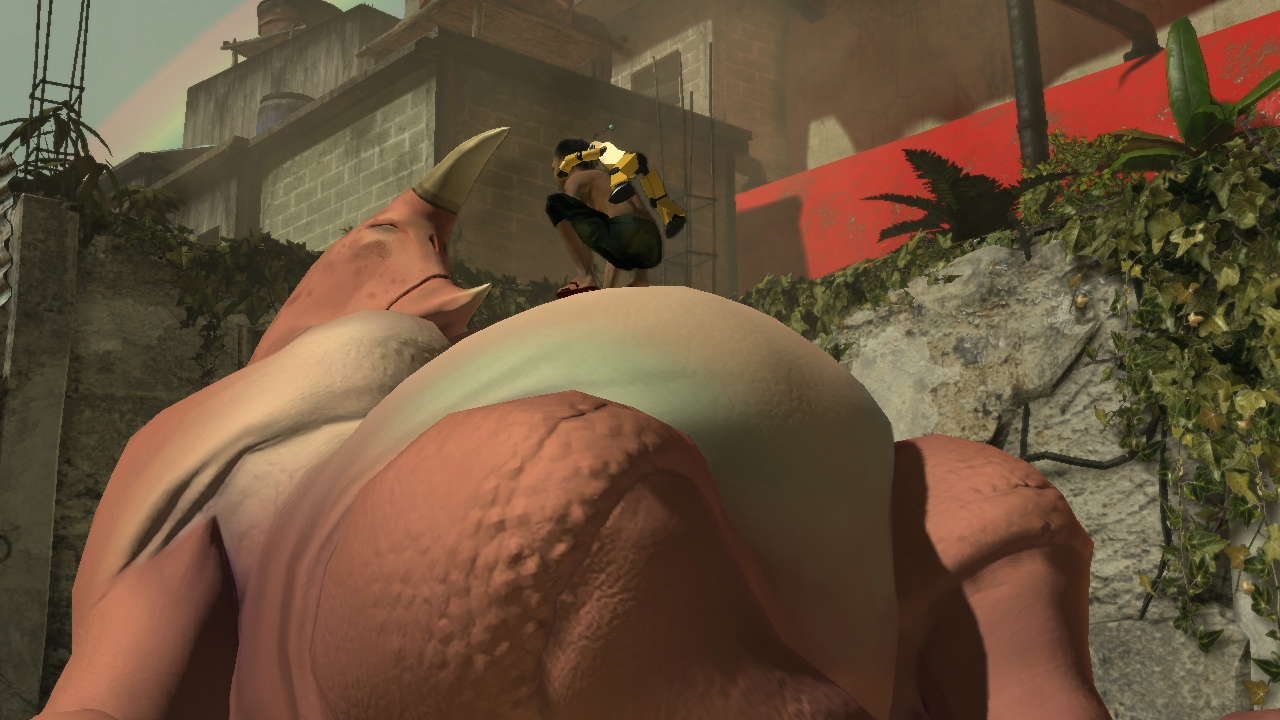Amidst the chaos that has been the Game Developer's Conference, I had the wonderful opportunity to sit down for an exclusive interview with Vander Caballero, president and creative director of Minority Media. The company, dedicated to creating "groundbreaking, immersive" game experience is responsible for the upcoming PlayStation Network fantasy-puzzle adventure Papo & Yo. Cabellero discussed the story embedded in the heart of his game, as well as where he thinks video games are moving as a creative, emotionally stirring medium.
Papo & Yo is the story of a young boy named Quico and his two best friends -- a toy robot and Monster, a large beast with a destructive addiction to consuming frogs. When Monster eats a frog he enters a fiery rage, affecting Quico's ability to function and interact with his environment and others. Quico's story is based on Caballero's own childhood living with his alcoholic father -- Monster, who is the most powerfully supportive and yet also destructive force in Quico's life, is everything Caballero faced as a child.
The demo I played featured a new character -- a young girl about Quico's age with white stripes ringing her limbs and covering her face. "My first love," Caballero said fondly as we watched the girl draw a door in a wall and disappear. The girl, name still unknown, draws puzzles in white paint on the surrounding environment that Quico must solve in order to reach her. "She draws on the world around her," said Caballero. "She's the one guiding you through the world and helping you. But she is afraid of you, because you want to hang out with a huge monster. Once you get close, she runs."
Papo & Yo features spatial puzzles in lush, rural villages crafted with stunning realism. The environment is based on where Caballero grew up, citing his idea to use personal locations coming from reading One Hundred Years of Solitude by Gabriel García Márquez. "I read [the book], and he's amazing in the way he takes reality and draws from it. You're reading the book and you're in reality and suddenly he transforms reality. I can do it! I can do it interactively! With video games you can do it interactively, and it's a really powerful way to do it."
Caballero when on to talk about Monster -- who was not in the demo due him being redesigned. "It's hard, when you're a kid, and your father is not actual doing what he's supposed to do. And then you always want to save him, you always want to say, 'If I only did this! If I only did that!' and you want to find a way to help. The game is about finding a cure -- for the Monster."
The Monster's addiction to frogs is a representation of his father's alcoholism, but Caballero's reason for using frogs as the source of addiction has its symbolism roots in fairytale mythos. "I had a book that analyzed Grimm's Fairy Tales, and in it they explain the story of 'The Princess and the Frog.' What happens in the Disney version is that they take the frog, and she kisses him. But in the real version of the story she doesn't kiss him, she takes him and smashes him against a wall. The reason is because the frog represents male genitalia." This sort of presentation to a young child is surely jarring -- while consuming the frog empowers the Monster, it essentially robs Quico of all functionality.
"If I see a frog I cannot touch it," he added with a laugh.
The frogs are brightly colored, brighter than the environment. Eating one causes Monster to burst into flames and turn on you instantly. "You have to be aware when frogs are around, because if the Monster is there it could be dangerous."
Quico's other companion, the robot, is from Caballero's childhood safe haven -- an imaginary world in which Caballero immersed himself in his toys and video games. "The robot is Quico's protector. He's Quico's guide, your buddy, your protector." Wearing the robot as a backpack allows Quico to double-jump, which helps in some of game's quirky puzzles.
The biggest challenge in creating Papo & Yo? "I want a bigger budget. I want enough money to put this on AI. People will criticize us and say, 'Oh The Last Guardian! His feet [curl around objects] and people will criticize us for it but we simply don't have the budget to create something on that scale. The big companies are going to give shooters big budgets. But it's more important to me that we show we can make good stories and good games without a huge blockbuster budget."
Support from Sony along with the Canadian Media Fund -- a company that support indies -- has made Papo & Yo possible, pushing the title, which absolutely looks like a triple-A title, forward despite its smaller budget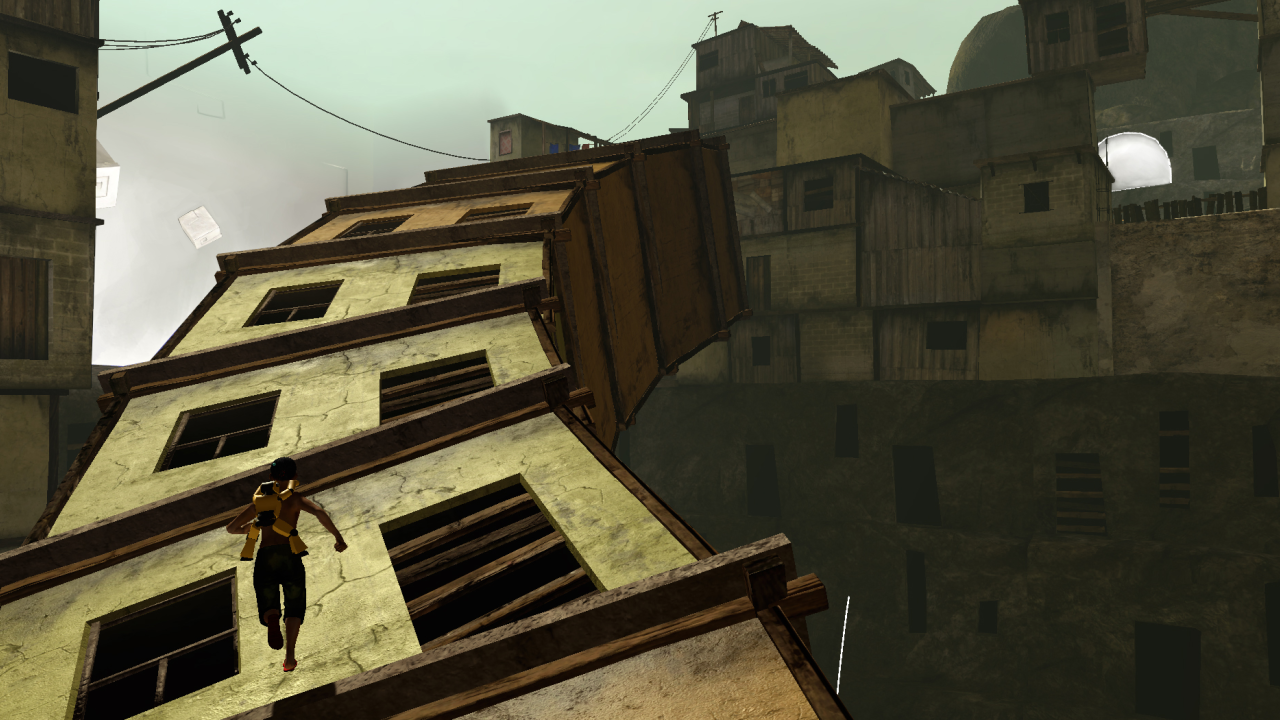
Papo & Yo sports a gorgeous soundtrack, composed by film veteran Brian D'Oliveira. "Brian has a beautiful history. He said, 'I want to do games!' and we just clicked right away. He has this beautiful studio and all these instruments that he collects... He has instruments you have never seen and have never heard. Not many games can connect the mechanics to the instruments used to compose the soundtrack, but that is what he's doing and we're glad to have him."
Caballero believes that video games are passing the boundaries of simple interactive media and approaching an art form. "You can get into the debate of what is art and so on... There have been so many commercial games. And the reason we still ask 'Are games art?' is because we have been taken hostage by big corporations and commercial titles.
“The problem today with video games is that so manypeople want to jump into telling stories that are too big for the medium. An example of that is using too many cinematics. Every time you use a cinematic you are telling something more complex than the media can hold, and that is one of the things that takes away from the experiences. You can used flashbacks either because you are showing something that you haven’t played, and it’s weird, you didn’t experience it. I tried to do everything interactively, there’s only about five minutes total of cinematic in Papo & Yo. It’s something we have to use the medium for.”
“Another issue is the controller. It’s very limiting. There is some stuff we can’t do [with a controller], and one of the biggest proofs of this is ICO – the story was about interaction, and it was accesible. You have to tell stories through systems, we have to create a system that makes people feel what we felt,” he added. “Voice recognition is great though. I wish we could push further in that area.”
Overall, Papo & Yo is a truly gorgeous game with a very big heart. It’s personal, steeped so deeply in human emotion and struggle that it’s hard not to fall in love mere minutes into gameplay. “I wanted to create a high-end experience, agame that is accesible to everyone. I want everyone to finish the game.”
As for what he would like to say to those stepping up to the game for the first time, Caballero has nothing to say. “I don’t want to say anything. I don’t want anyone coming to the game with any assumptions. The best experience, anjd the people that will like it the most, are those that know nothing about it and will find it by a fluke.”
I, however, cannot not tell anyone about this luscious game. Papo & Yo will come out later this year, and should be a must on the wish list for those who turn to games for good stories.

